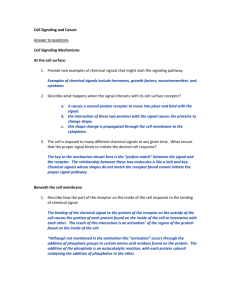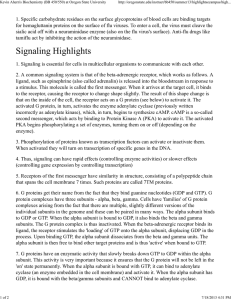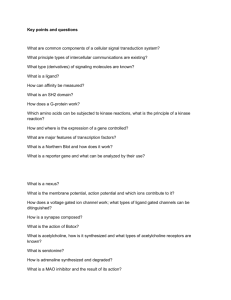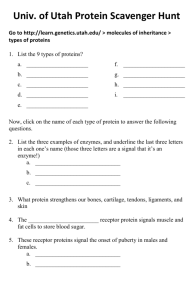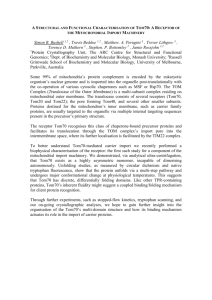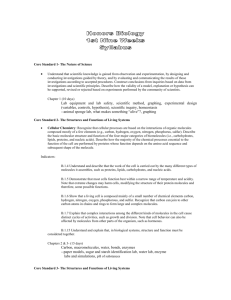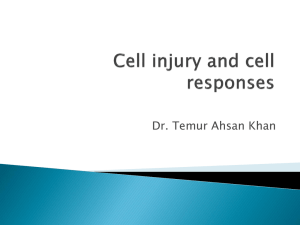Study guide chapter 11
advertisement
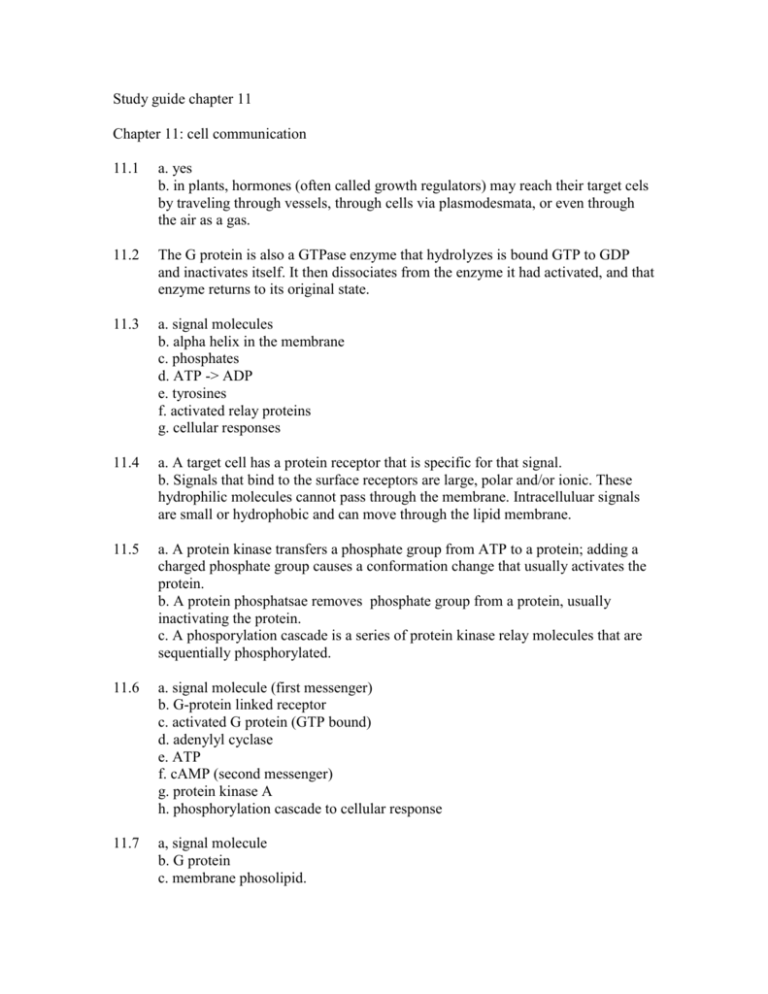
Study guide chapter 11 Chapter 11: cell communication 11.1 a. yes b. in plants, hormones (often called growth regulators) may reach their target cels by traveling through vessels, through cells via plasmodesmata, or even through the air as a gas. 11.2 The G protein is also a GTPase enzyme that hydrolyzes is bound GTP to GDP and inactivates itself. It then dissociates from the enzyme it had activated, and that enzyme returns to its original state. 11.3 a. signal molecules b. alpha helix in the membrane c. phosphates d. ATP -> ADP e. tyrosines f. activated relay proteins g. cellular responses 11.4 a. A target cell has a protein receptor that is specific for that signal. b. Signals that bind to the surface receptors are large, polar and/or ionic. These hydrophilic molecules cannot pass through the membrane. Intracelluluar signals are small or hydrophobic and can move through the lipid membrane. 11.5 a. A protein kinase transfers a phosphate group from ATP to a protein; adding a charged phosphate group causes a conformation change that usually activates the protein. b. A protein phosphatsae removes phosphate group from a protein, usually inactivating the protein. c. A phosporylation cascade is a series of protein kinase relay molecules that are sequentially phosphorylated. 11.6 a. signal molecule (first messenger) b. G-protein linked receptor c. activated G protein (GTP bound) d. adenylyl cyclase e. ATP f. cAMP (second messenger) g. protein kinase A h. phosphorylation cascade to cellular response 11.7 a, signal molecule b. G protein c. membrane phosolipid. d. IP3 e. Ca2+ f. endoplasmic reticulum 11.8 a. Signal molecules reversibly bind o reception and when they leave a receptor, the receptor reverts to its inactive form. The concentration of signal molecules influences how many are bound at any time. b. Activated G protein are inactivated when the GTPase portion converts GTP to GDP. c. Phosphodieserase converts cAMP to AMP, thus damping out this second messenger. d. Protein phosphates remove phosphate groups from activated proteins. The balance of active protein kinases and active phosphatases regulates the activity of many proteins. Suggested answers to structure your knowledge 1. Cell signaling is essential for communication between ells. Unicellular organisms use signals to relay environmental or reproductive information. Communication in multicellular organisms allows for the development and coordination of specialized cells. Extracellular signals control the crucial activities of cells, such as cell division, differentiation, metabolism and gene expression. 2. Cell signaling occurs through signal transduction pathways that include reception, transduction and response. First a signal molecule binds to a specific receptor. The message is transduced as the activated receptor activates a protein that may relay the message through a sequence of activations, finally leading to the activation of proteins that produce the specific cellular response. 3. The sequence described in the previous answer results in the activation of cellular proteins. When the signal is transduced to activate a transcription factor, however the cellular response is a change in gene expression and the production of new proteins. 4. In an enzyme cacade, ch step in the pathway activates multiple substrates of the next step, hus amplifying the original message to produce potentially millions of activated proteins and thus a large cellular response to few signals. Answer to test your knowledge: 1. c p. 130 2. d p. 202 3. a p. 326 4. b p. 206 5. e p. 207 6. d p. 65 7. c p. 202 8. e p. 212 9. c p. 295 10. a p. 202 11. c p. 203 12. e p. 206 13. b p. 206 14. d p. 212
